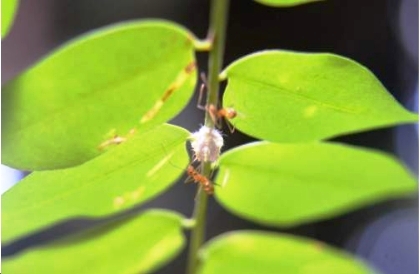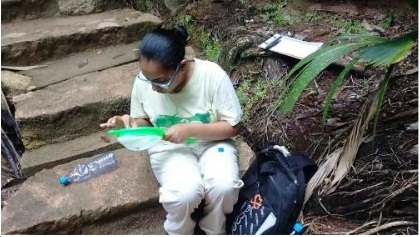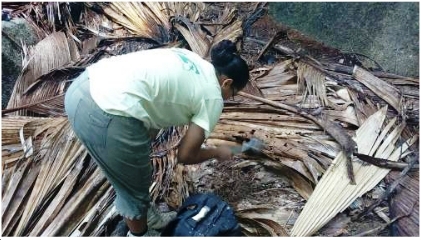8th yellow crazy ant survey conducted as control methods begin |15 January 2018
v\:* {behavior:url(#default#VML);} o\:* {behavior:url(#default#VML);} w\:* {behavior:url(#default#VML);} .shape {behavior:url(#default#VML);}
For the 8th consecutive year, the Vallée de Mai research team conducted a pitfall trap survey on invasive yellow crazy ants in the Vallée de Mai in November last year.
The 50 core primary points were surveyed.
The repeated surveying of the same sites allows for a comparison of the data since the beginning of the survey in 2009, and with each survey completed since then.
As well as the absence or presence of yellow crazy ants, the survey also considers the overlapping occurrence of yellow crazy ants in areas where other native or introduced ants are present such as Technomyrmex Abipes and Odontomachus Simillimus.
crazy ants in areas where other native or introduced ants are present such as Technomyrmex Abipes and Odontomachus Simillimus.
Climatic variables and structural changes are also noted to determine whether they influence the distribution of yellow crazy ants.
Of the 50 core points surveyed, yellow crazy ants were present at 46 points and absent from four points. This represents a substantial increase in distribution from 74 % to 92 % coverage of the Vallée de Mai in the last 12 months.
While they were previously restricted to the northern and eastern areas of the forest, they are now also found in the western parts of Vallée de Mai.
The average abundance per point has also increased from 53 yellow crazy ants in 2016 to 88.1 ants in 2017.
A maximum of 850 yellow crazy ants were recorded at a single point, the highest ever before this year was 651.
The considerable increase in the distribution and abundance of yellow crazy ants requires urgent action as they potentially pose a threat to the birds, reptiles and amphibians of the Vallée de Mai.
Fortunately the new Inva’Ziles project has been hard at work investigating a range of invasive alien species and methods to control them; including yellow crazy ants.
In order to determine the number of ants on trees used by black parrots for nesting the team will be setting up cameras to film and count them.
The team will also trial novel ways to prevent the ants affecting native species, such as the black parrot through canopy access restriction.
This work will include wrapping the trees in which black parrots are nesting in a variety of materials to deter the ants from accessing the nests.
They will also be trialing environmentally friendly methods to control the population of ants.
Over the next few months things will become very busy, but it is an exciting time as the results of these trials could really help the black parrots breeding success in future years.


SIF
Normal 0 false false false EN-US X-NONE X-NONE /* Style Definitions */ table.MsoNormalTable {mso-style-name:"Table Normal"; mso-tstyle-rowband-size:0; mso-tstyle-colband-size:0; mso-style-noshow:yes; mso-style-priority:99; mso-style-qformat:yes; mso-style-parent:""; mso-padding-alt:0in 5.4pt 0in 5.4pt; mso-para-margin:0in; mso-para-margin-bottom:.0001pt; mso-pagination:widow-orphan; font-size:11.0pt; font-family:"Calibri","sans-serif"; mso-ascii-font-family:Calibri; mso-ascii-theme-font:minor-latin; mso-fareast-font-family:"Times New Roman"; mso-fareast-theme-font:minor-fareast; mso-hansi-font-family:Calibri; mso-hansi-theme-font:minor-latin; mso-bidi-font-family:"Times New Roman"; mso-bidi-theme-font:minor-bidi;}




